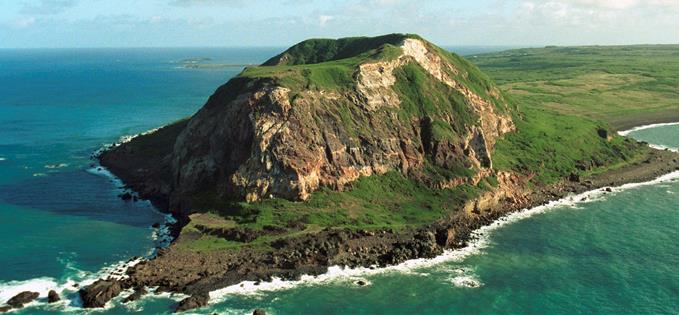FROM the ash-entombed victims of Pompeii and Krakatoa's mega tsunami to St. Helen’s 300 mph magma landslide, the lethal power of volcanoes has held sway over mankind for centuries. They’ve destroyed whole cities, showered acid rain and, some propose, caused the ‘Great Dying'; a mass extinction 250 million years ago that killed 90% of the world’s species. Now, Manchester University’s Albert Zijlstra has joined forces with a team of volcanologists, to determine the top ten most dangerous volcanoes at present - with surprising results.
It has major eruptions every 2000 years: the last was 2000 years ago...
The list highlights those which have a realistic chance of erupting in the next 100 years and risk causing the deaths of one million people or more. They may not be those we normally see steaming across the media but that’s the point: whilst less studied, they nevertheless threaten regional and world stability.
Heading the list is Iwo Jima, a Japanese island invaded by the US army during WW2. The beach where American forces landed in 1945 has since risen seventeen metres above the ocean surface, three less than the island as a whole. Why? A growing magma chamber that’s pushing it up at a rate of one metre every four years. Having done this for several hundred years, it’s only a matter of time before Iwo Jima explodes with spectacularly fatal consequences.
Whilst the island itself is sparsely-populated, a large eruption could cause a tsunami 25 metres high, devastating southern Japan and coastal Chinese cities like Hong Kong and Shanghai. The eruption of similarly-sized Kuwae in Vanatua in 1458 caused a tsunami 30 metres high in New Zealand and the cultural collapse of Polynesia.
 Iwo Jima... a catastrophe waiting to happen?
Iwo Jima... a catastrophe waiting to happen?Second is Nicaragua’s Apoyeque. With the threat of a large lake tsunami and the eruption itself, it would be a double whammy for the country’s capital Managua, whose population of two million neighbours the volcano. It has major eruptions every 2000 years: the last was 2000 years ago...
In third place is Campi Flegrei. Posing even more of a threat to Naples than the infamous Vesuvius, it blows less frequently but has the potential for larger eruptions and is closer to the Italian hotspot: indeed its caldera houses the city’s western suburbs, putting a population of four and a half million in grave danger.
THE TOP TEN:
1. Iwo Jima, Japan. Candidate for a very large eruption. At risk: Japan, Philippines, coastal China
2. Chiltepe/Apoyeque, Nicaragua. At risk: Managua
3. Campei Flegrei, Italy. At risk: Naples
4. Mount Aso, Japan. At risk: Kumamoto, Nagasaki
5. Trans Mexico Volcanic Belt, Mexico. At risk: Mexico City, Pueblo, Toluca
6. Gunung Agung, Indonesia. At risk: Bali
7. Mount Cameroon (or Mongo ma Ndemi), Cameroon. At risk: Buea, Douala
8. Taal, Philippines. At risk: Manilla
9. Mayon, Philippines. At risk: Legazpi
10. Gunung Kelud, Indonesia. At risk: Malang
Explaining the motivation behind the list - which also includes Indonesia, the Philippines, Mexico, and Cameroon - Professor Albert Zijlstra said: “There are parts of the world where monitoring of volcanoes is very poor, and many of these poorly watched volcanoes are close to populated areas.
“The last time such a list was made was 25 years ago and that list mainly included volcanoes that are accessible to study in developed countries. Our new list looks all over the world, including in less developed countries. We have created this list to try to highlight the need for better monitoring and preparedness in many areas of the world.
"There hasn't been a major eruption for 200 years, since Tambora in 1815 (“the year without summer”), and there has never been a large eruption in a modern, developed country. There is a chance of perhaps one in three that there will be such an eruption this century”.
Henrik Lovën, previously a major in the Swedish army and keen amateur volcanologist, helps to run the Volcano Café site and contributed to the top ten list. He said: “We want to raise awareness that there are many volcanoes that could erupt and that are not being monitored properly. Hopefully the people who live near the volcanoes in this list will get more help to help them prepare for an eruption”.
More information at volcanocafe.org.















